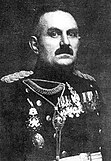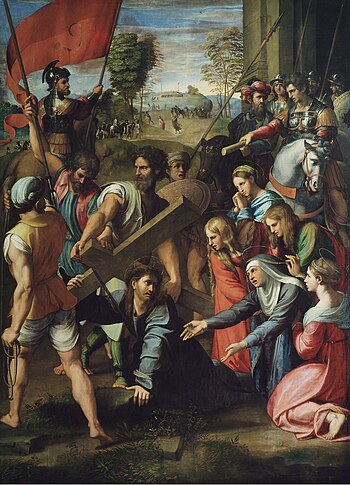Wikipedia:Main Page history/2022 April 15
From today's featured article Commander Petar Nedeljković The 4th Army was a Royal Yugoslav Army formation mobilised prior to the German-led invasion of the Kingdom of Yugoslavia during World War II. It initially consisted of three infantry divisions, one brigade-strength detachment, one horse cavalry regiment and one independent infantry regiment. It was responsible for defending a large section of the Yugoslav–Hungarian border, being deployed behind the Drava river between Varaždin and Slatina. Like all Yugoslav formations at the time, the 4th Army had serious deficiencies in both mobility and firepower, and it was only partially mobilised when the invasion began on 6 April 1941. The 4th Army put up scattered resistance, but began to withdraw southwards on 9 April, and on 10 April it ceased to exist as an operational formation. The remains of the 4th Army were ordered to stop fighting on 15 April, and the Yugoslav Supreme Command surrendered unconditionally, effective on 18 April. (This article is part of a featured topic: 1st Army Group (Kingdom of Yugoslavia).)
Recently featured:
Did you know ...
|
In the news
On this dayApril 15: Day of the Sun in North Korea
|
From today's featured list
Fractional currency, also referred to as shinplasters, was introduced by the United States federal government following the outbreak of the Civil War. These low-denomination banknotes of the United States dollar were in use between 21 August 1862 and 15 February 1876, and issued in denominations of 3, 5, 10, 15, 25, and 50 cents across five issuing periods. The complete type set is part of the National Numismatic Collection, housed at the Smithsonian Institution's National Museum of American History. The design of the first issue (postage currency) was directly based on the original handmade examples of United States treasurer Francis E. Spinner (pictured on banknote). Some varieties even had a perforated stamp-like edge. While not considered a legal tender, postage currency could be exchanged for United States Notes in five-dollar lots and were receivable in payment of all dues to the United States, up to five dollars. (Full list...)
Today's featured picture

|
Christ Falling on the Way to Calvary, also known as Lo Spasimo or Il Spasimo di Sicilia, is an oil painting by the Italian High Renaissance painter Raphael, originally painted on panel around 1514 to 1516 but later transferred to canvas in the 19th century. It depicts Christ carrying the cross to his crucifixion, specifically the moment when he falls and his mother Mary suffers a spasm of agony, known as the Swoon of the Virgin. The painting's emotion is densely crammed into the foreground, and the background is similar to that of a stage set with distant groups of people and crosses. The work was commissioned by the Sicilian monastery of Santa Maria dello Spasimo in Palermo and now hangs in the Museo del Prado in Madrid. Painting credit: Raphael
Recently featured:
|
Other areas of Wikipedia
- Community portal – The central hub for editors, with resources, links, tasks, and announcements.
- Village pump – Forum for discussions about Wikipedia itself, including policies and technical issues.
- Site news – Sources of news about Wikipedia and the broader Wikimedia movement.
- Teahouse – Ask basic questions about using or editing Wikipedia.
- Help desk – Ask questions about using or editing Wikipedia.
- Reference desk – Ask research questions about encyclopedic topics.
- Content portals – A unique way to navigate the encyclopedia.
Wikipedia's sister projects
Wikipedia is written by volunteer editors and hosted by the Wikimedia Foundation, a non-profit organization that also hosts a range of other volunteer projects:
-
Commons
Free media repository -
MediaWiki
Wiki software development -
Meta-Wiki
Wikimedia project coordination -
Wikibooks
Free textbooks and manuals -
Wikidata
Free knowledge base -
Wikinews
Free-content news -
Wikiquote
Collection of quotations -
Wikisource
Free-content library -
Wikispecies
Directory of species -
Wikiversity
Free learning tools -
Wikivoyage
Free travel guide -
Wiktionary
Dictionary and thesaurus
Wikipedia languages
This Wikipedia is written in English. Many other Wikipedias are available; some of the largest are listed below.
-
1,000,000+ articles
-
250,000+ articles
-
50,000+ articles




